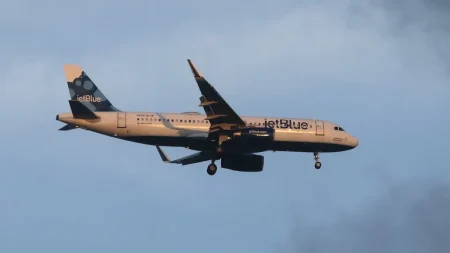Denmark Faces Growing Security Concerns as Mysterious Drone Sightings Proliferate
National Unease Grows as Unidentified Aircraft Penetrate Danish Airspace
In recent months, an unprecedented surge of unidentified drone activity across Denmark has triggered mounting public concern and raised serious questions about the Nordic nation’s airspace security infrastructure. These mysterious aerial incursions, occurring with increasing frequency over sensitive locations including government buildings, critical infrastructure, and military installations, have created a palpable sense of unease among citizens and officials alike. Security experts characterize this development as particularly troubling given Denmark’s strategic position as a NATO member and its location as a gateway between Northern Europe and the Baltic region.
“What we’re witnessing is not merely isolated incidents, but a pattern that suggests coordinated surveillance,” explained Søren Jørgensen, a former defense intelligence officer now working with the Danish Institute for International Studies. “The timing couldn’t be more sensitive, given the heightened geopolitical tensions in Northern Europe and the Baltic region.” The Danish Defense Intelligence Service has acknowledged an approximately 340% increase in reported drone sightings over the past eighteen months, with clusters of incidents particularly concentrated around Copenhagen, major port facilities, and energy infrastructure along the country’s extensive coastline. While authorities have been careful not to attribute these incursions to any specific state or non-state actors without conclusive evidence, the sophisticated nature of some drones—operating at night, at significant altitudes, and with apparent immunity to conventional countermeasures—has amplified concerns about potential foreign surveillance operations.
Critical Infrastructure Vulnerability Exposed as Sightings Intensify
The drone activity has highlighted critical gaps in Denmark’s ability to detect, track, and neutralize unauthorized aerial vehicles, particularly those employing advanced technology. Perhaps most concerning to security officials are repeated sightings near the Fehmarn Belt construction project—the world’s longest immersed tunnel currently being built to connect Denmark and Germany—and over offshore wind farms that form a crucial component of Denmark’s energy security strategy. “These incidents expose a troubling reality: our conventional air defense systems were simply not designed to counter small, commercially available drones that can now carry sophisticated surveillance equipment,” noted Christina Nielsen, cybersecurity advisor to Denmark’s Ministry of Defense. “We’re essentially witnessing the democratization of capabilities that were once exclusively in the domain of state intelligence agencies.”
Public utilities and energy companies have reported at least 78 separate drone observations in restricted airspace around power plants, water treatment facilities, and telecommunications infrastructure since January. The Copenhagen Airport Authority confirmed multiple security incidents involving unidentified drones in proximity to flight paths, forcing temporary disruptions to commercial aviation on at least three occasions. Maritime authorities have similarly documented unusual drone activity over shipping lanes and naval facilities, including persistent reports from commercial vessels in Danish territorial waters. These incidents collectively point to what security analysts describe as a systematic effort to map critical vulnerabilities in Denmark’s infrastructure, creating digital records of potential security weaknesses that could be exploited in future scenarios ranging from sabotage to coordinated hybrid warfare campaigns.
Public Anxiety Rises as Media Coverage Intensifies
The psychological impact of these incidents should not be underestimated, according to sociologists monitoring public reaction to the ongoing situation. A recent poll conducted by the University of Copenhagen revealed that 67% of Danes now express moderate to serious concern about drone activity, with over 40% reporting they have personally observed suspicious aerial vehicles in their communities. “What makes this particularly unsettling for citizens is the ambiguity—the not knowing exactly who is behind this or what their intentions might be,” explained Dr. Astrid Frederiksen, professor of social psychology at Aarhus University. “This uncertainty creates a perfect environment for anxiety to flourish, especially when amplified through social media channels where speculation often outpaces verified information.”
Media coverage has intensified alongside the increasing frequency of sightings, with major Danish publications like Berlingske and Politiken running front-page stories detailing witness accounts and expert analysis. Television news programs regularly feature updated maps of confirmed incidents, creating visual representations that underline the nationwide scope of the phenomenon. Citizen-led drone spotting groups have emerged on platforms like Facebook and Telegram, where thousands of Danes share real-time observations and amateur photographs of unidentified aircraft. While these grassroots monitoring efforts have occasionally provided valuable information to authorities, they have also inadvertently contributed to information overload and, in some cases, false reports that divert limited security resources. The challenge for both media organizations and government communicators has been to provide transparent information that informs without alarming, a delicate balance that has proven difficult to maintain as incidents multiply.
Government Response Evolves Amid Criticism of Initial Reaction
Denmark’s response to the drone challenge has evolved considerably since the first significant cluster of sightings was reported in late 2022. Initial government reactions were criticized as inadequate, with opposition politicians and security experts pointing to insufficient coordination between police, military, and intelligence services. “The early phases of this situation revealed concerning gaps in our national security response framework,” acknowledged Defense Minister Magnus Rasmussen in a recent parliamentary session. “We have since implemented substantial improvements to our detection capabilities and inter-agency protocols, but we must acknowledge this represents a new frontier in security challenges that requires innovative approaches.”
The government has subsequently allocated approximately 340 million Danish kroner (approximately $50 million USD) toward enhanced counter-drone technology, including sophisticated electronic detection systems deployed around high-value targets and critical infrastructure. New legislation passed earlier this year granted expanded authorities to security services for neutralizing unauthorized drones, including the ability to employ signal jamming technologies previously restricted due to concerns about interference with civilian communications. Additionally, the Danish Home Guard (Hjemmeværnet) has established specialized drone detection units in each region, training volunteer observers to accurately document and report suspicious aerial activity through a centralized notification system. International cooperation has similarly intensified, with Denmark now participating in a NATO working group dedicated to counter-drone strategies and information sharing about similar incidents across member states. Despite these measures, critics argue the response remains reactive rather than preventive, with Andreas Petersen, chair of the Parliamentary Defense Committee, noting: “We are playing catch-up in a domain where the technological advantages clearly favor those conducting these surveillance operations.”
Broader Implications for European Security and the Path Forward
The drone incidents in Denmark represent more than just a national security challenge—they highlight an emerging vulnerability across Europe that security planners are struggling to address. As similar patterns of unauthorized drone activity have been documented in neighboring Sweden, Norway, and Baltic states, the situation increasingly appears to be part of a broader reconnaissance effort targeting Northern European infrastructure and defense capabilities. “What we’re witnessing in Denmark likely represents a testing ground for tactics that could be deployed across multiple European nations,” warned Jens Stoltenberg, NATO Secretary General, during a recent security conference in Brussels. “The alliance must develop a coordinated response that addresses both the technological and legal challenges posed by these new forms of surveillance.”
Looking ahead, Denmark faces difficult questions about the appropriate balance between security measures and maintaining its traditionally open society. Proposals for more aggressive counter-drone technologies, including systems capable of physically neutralizing unauthorized aircraft, have sparked debate about potential risks to civilian aviation and privacy implications of expanded aerial surveillance by authorities themselves. Meanwhile, cybersecurity experts emphasize that physical drone incursions may represent just one component of a multi-faceted approach to intelligence gathering that includes digital intrusions and social engineering tactics. “The visible drones may actually be the least concerning aspect of what we’re facing,” cautioned Emma Holst, director of Denmark’s Center for Cyber Security. “They serve as a visible reminder of vulnerabilities that extend far beyond our airspace.” As Denmark works to strengthen its resilience against these new threats, its experience offers valuable lessons for other nations facing similar challenges in an era where technological advances continue to reshape the security landscape at a pace that often outstrips regulatory and defensive adaptations. For ordinary Danes, however, the more immediate concern remains the unsettling reality that their skies are no longer securely their own—a sentiment that reflects broader anxieties about vulnerability in an increasingly unpredictable security environment.










